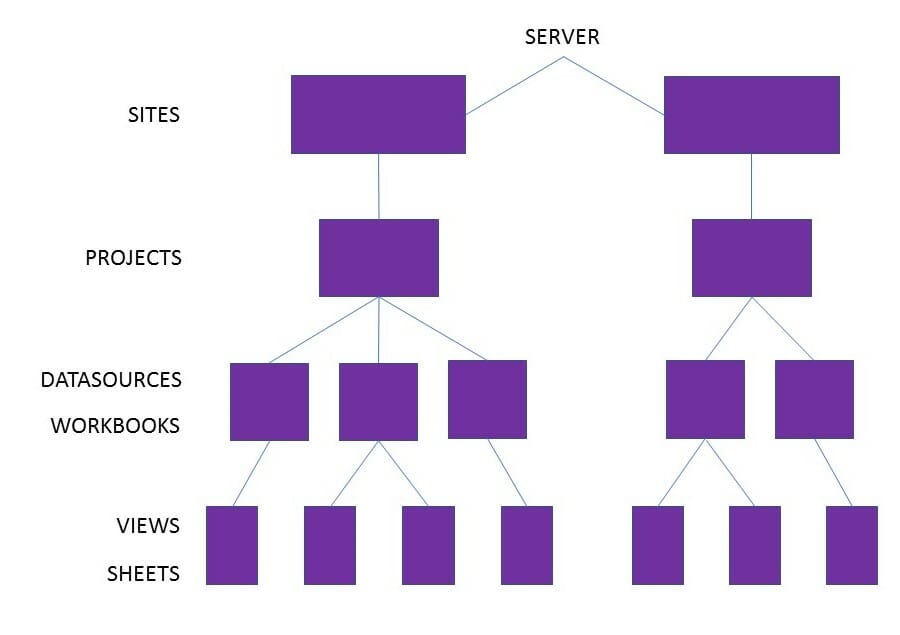This week we were introduced to Tableau Server by Ravi. We started by understanding the structure of Tableau Server, as shown below:
The way I understand it, we have 4 levels:
Level 1: Sites
Sites are like partitions or hosts. There is no communication between different sites, and you cannot share projects or workbooks between different sites.
When you create a site, you become a site admin, which means that you have unrestricted access to the content of that site. As a site admin you can create projects (level 2), manage workbooks and assign site and project roles and permissions to other members.
Level 2: Projects
Projects are like containers, where you can contain your workbooks and data sources in one place – is a way of organising your workbooks and data sources in one place. As a site admin you can delegate some content to project leaders who can control this project. Project leaders basically have their freedom in their assigned project to create, explore, publish and to assign roles and permissions to other users. Projects can contain other projects.
Level 3: Workbooks/Datasources
Workbooks and data sources are contained within one project. You can share a workbook from one project to another, but they have to be within the same site. So basically, you can’t share one workbook from one project in Site A to another project in Site B.
Level 4: Views
Workbooks are a collection of views. So, projects contain workbooks and workbooks contain views.
Views within workbooks are like worksheets. When publishing a workbook, you have the option to display certain views within your workbook and hide others.
Hopefully, that gave you a bit of an idea of Tableau Server structure. Will prepare more posts to dig in more within Tableau Server very soon.

